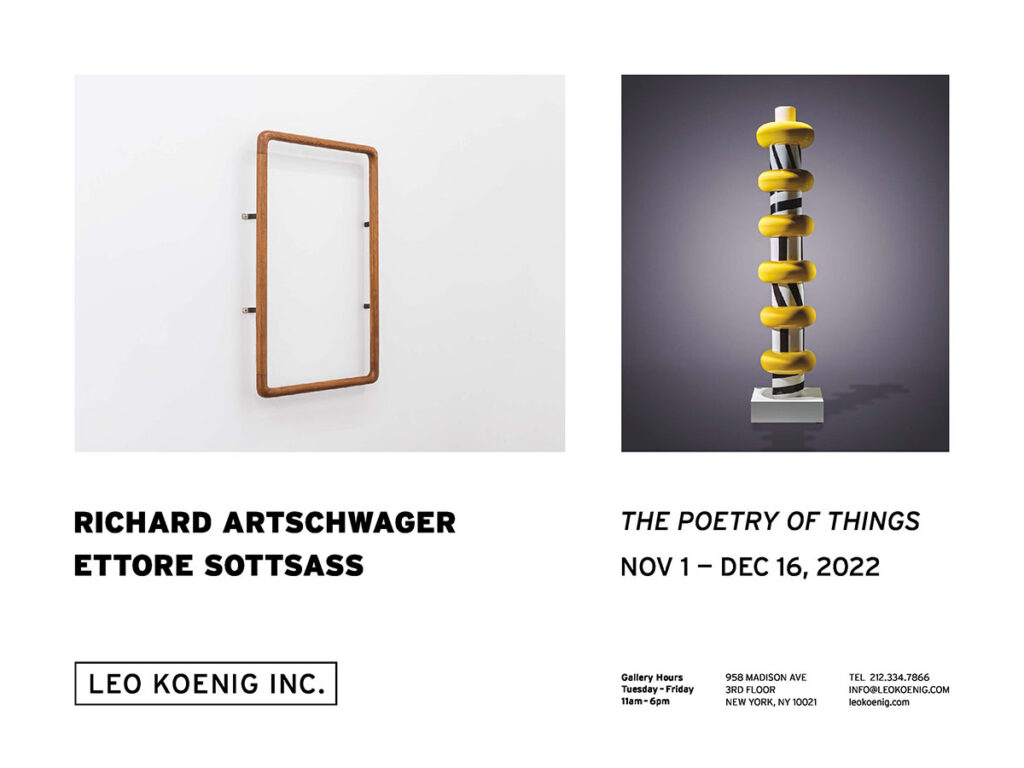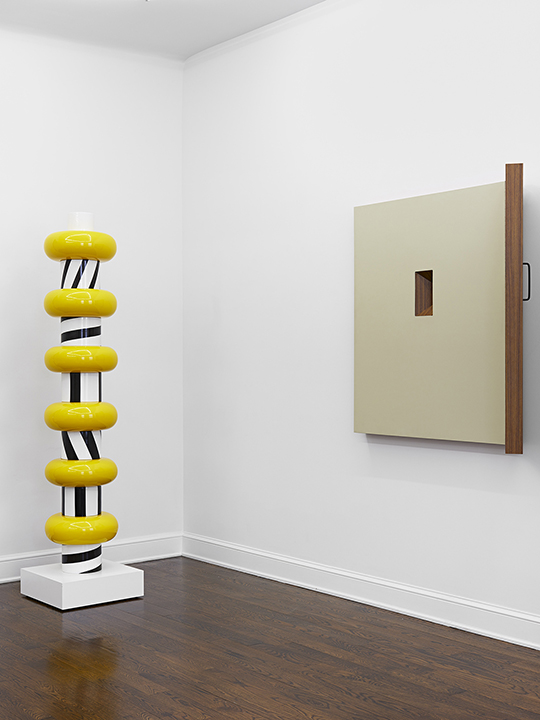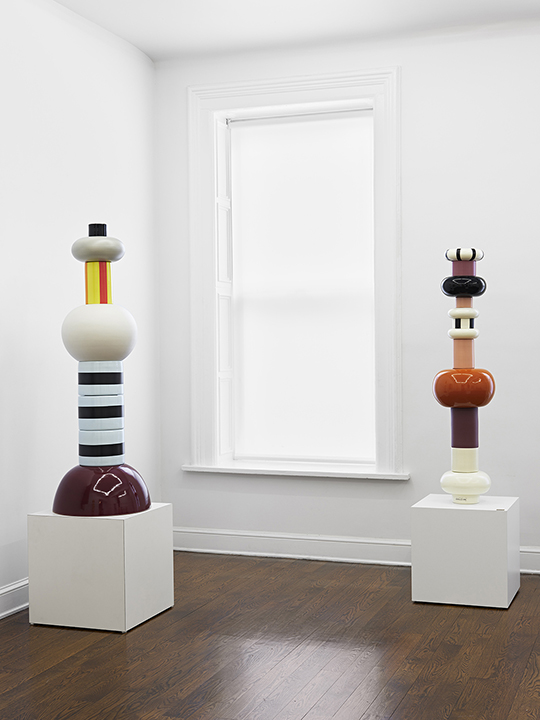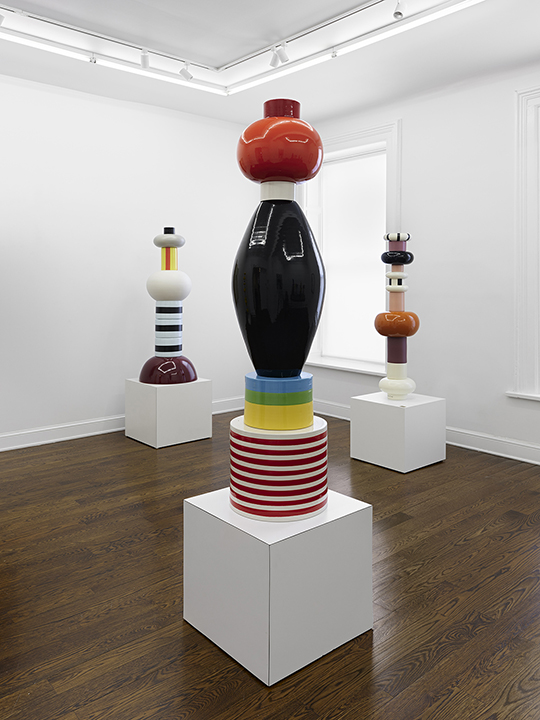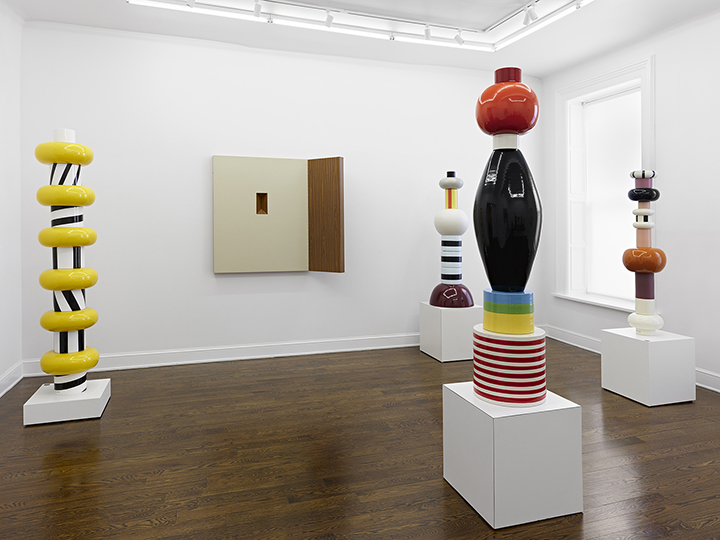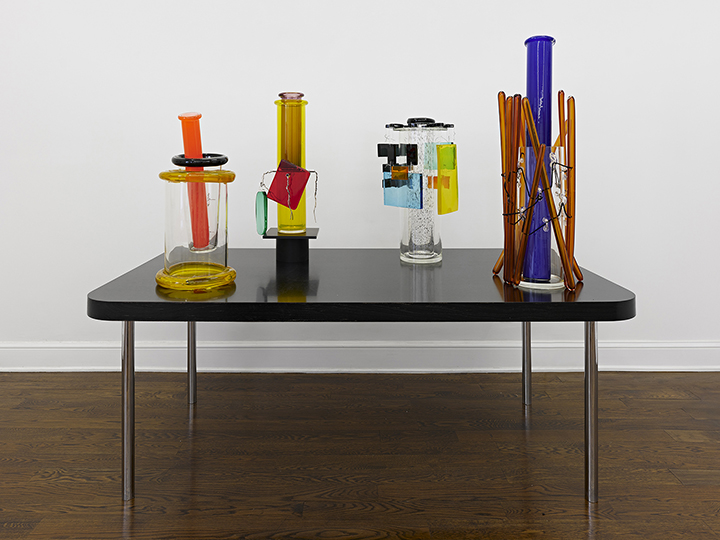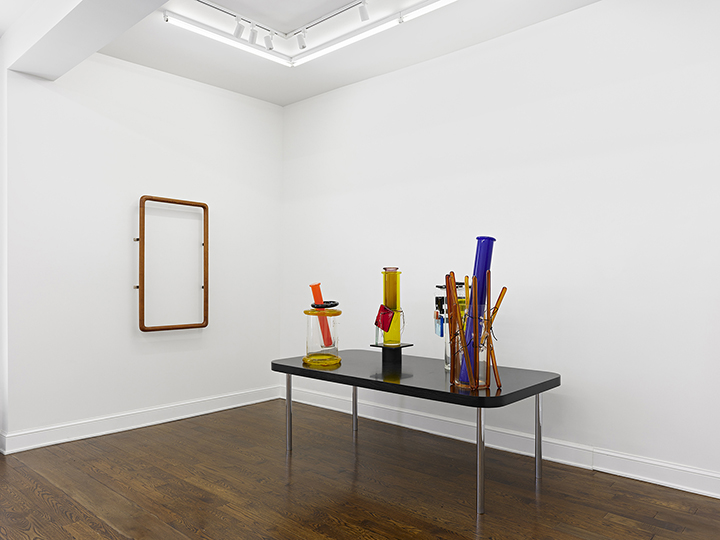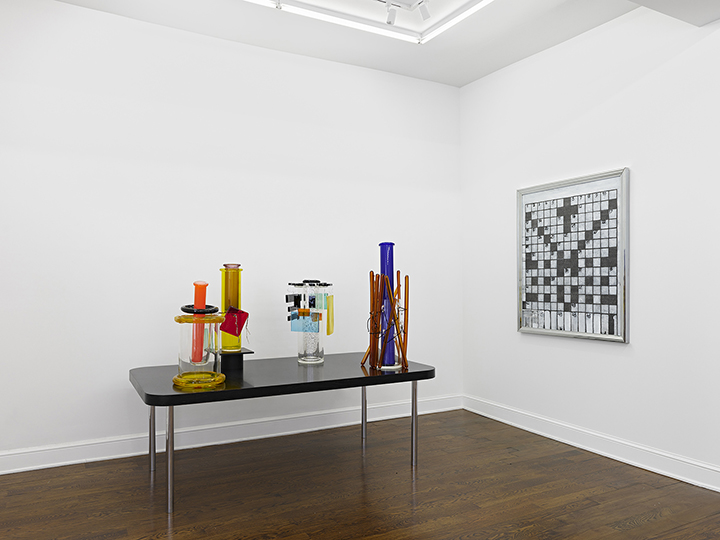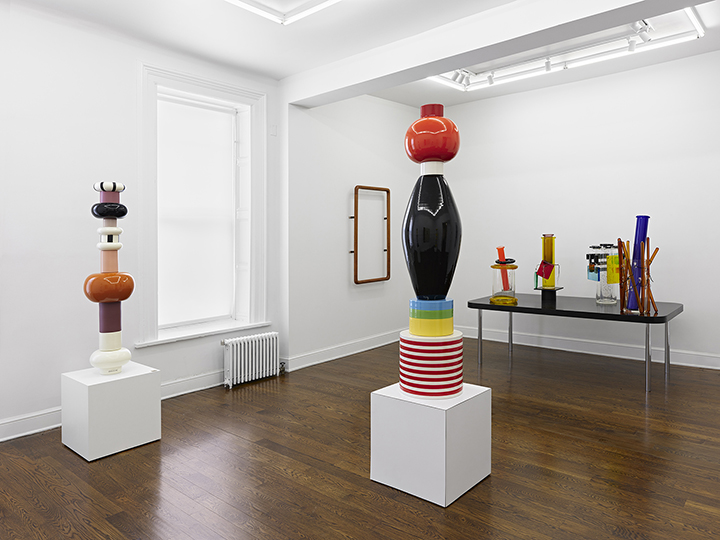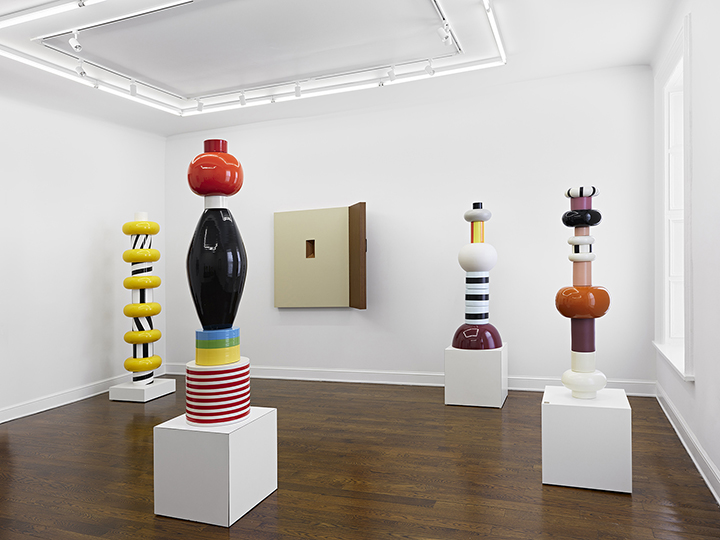Leo Koenig Inc. is pleased to announce the opening of the exhibition *The Poetry of Things with works by Richard Artschwager and Ettore Sottsass. The title of the exhibition is borrowed from the book written about, and chronicling the life of Sottsass by author Deyan Nujic. Both artists in the exhibition developed historic careers elevating everyday objects or materials into sublime works of art.
The exhibition features a selection of Totems and vases by Ettore Sottsass. Sottsass reportedly initiated his first totem while recovering from a near fatal bout of nephritis in 1962, when he sketched one from the cocktail of medicines that he would have to ingest to save his life. Often, the totems represented contemporary social, political, or spiritual concerns. But Sottsass also thought that the objects could occupy the surrounding space and determine its meaning. These objects to him, became the link between the spatial and sensorial experience of the viewer; their primary function acting as an energy catalyst. Forever critiquing consumerism and “good taste” Sottsass thought his ceramics were ‘deliberately and irremediably wrong’ and not meant to be sold and/or used. Meanwhile, many viewers espoused that they ‘enjoyed spending time in a room full of ceramics, which resembled an odd garden full of giant flowers’ (from a letter written by Sottsass to Aldo Londi, 31 May 1967)
Richard Artschwager consistently defied categorization, likewise, toying with the comprehension of space, often casting everyday objects that occupy it as strangely unfamiliar. Because of his use of utilitarian objects and incorporation of commercial materials, His work has been described as Pop art, as Minimal art, because of his use of geometric forms and stark, solid presence; and as conceptual art, because of its cerebral detachment.
Intermittently, while making a living as an artist, Artschwager also worked as a cabinet maker and was a master craftsman. He borrowed many of the techniques and materials used from his craft to further inform his practice. In the groundbreaking work Handle, (1962), a rectangle is crafted from a cylinder of honed and polished wood. Although three-dimensional like a sculpture, it is hung on the wall like a painting, “framing” a view of the wall behind it. In Handle III, Artschwager used one of his favorite materials, formica to help fashion a work that again, hangs on the wall, but is reminiscent of furniture and cabinetry. Artschwager’s painting of a crossword puzzle elevates an everyday activity, captured on Celotex, (which was a common household building material for ceilings), and helps to illustrate the artist’s intent to perplex and conflate boundaries.
Ettore Sottsass (Italian, 1917–2007) was an architect and designer, labeled the godfather of Italian design. Born in Austria and raised in Milan, Sottsass studied architecture at the Politecnico di Torino in Turin. After spending most of World War II in a concentration camp in Yugoslavia, Sottsass returned to Milan, where he set up his own architectural and industrial design studio.
In 1958, he was hired as a design consultant for the Olivetti company. While there, he produced numerous designs, including the Elea 9003 computer and the red plastic Valentine portable typewriter. His aim was to produce objects that went beyond typical consumerist products, and thus came to define postmodernist design.
As Sottsass distanced himself from pure functionalism, he started experimenting with designs that had social and historical components. During this time, Sottsass became a leading figure in the Anti-Design movement. In 1981, Sottsass led a group of designers who came to be known as the Memphis group. This group experimented with colors and media, creating multifunctional pieces and breaking with convention. Their materials included neon, unusual finishes, and patterned plastic laminates. He also established the architectural firm Sottsass Associati, with the aim of producing large-scale designs.
Sottsass’s work has been the subject of retrospective exhibitions at the Centre Pompidou in Paris, the Los Angeles County Museum of Art, and the Design Museum in London, among others. His numerous awards included the title of Office of the Ordre des Arts et des Lettres of the French Republic in 1992, an honorary degree from the Rhode Island School of Design in 1993, an Honorary Doctor of the Royal College of Art in London in 1996, an Oribe Award in Japan in 1997, and a Sir Misha Black Award in 1999.
Richard Artschwager was born in 1923 in Washington, DC, and died in 2013 in Albany, New York. After receiving a BA in 1948 from Cornell University, New York, he studied under Amédée Ozenfant, one of the pioneers of abstraction. In the early 1950s Artschwager became involved in cabinetmaking, producing simple pieces of furniture. After a ruinous workshop fire at the end of the decade, he began making sculpture using leftover industrial materials, then expanded into painting, drawing, site-specific installation, and photo-based work. Artschwager’s first exhibition took place at the Art Directions Gallery, New York, in 1959, and was followed by the first of many solo exhibitions with Leo Castelli in 1965. Solo exhibitions include Up and Across, Neues Museum, Nuremberg, Germany (2001, traveled to Serpentine Gallery, London); Museum für angewandte Kunst (MAK), Vienna (2002); Kunstmuseum Winterthur, Switzerland (2003, traveled to Kaiser Wilhelm Museum, Krefeld, Germany, and Staatliche Graphische Sammlung, Munich); Painting Then and Now, Museum of Contemporary Art, Miami (2003); Up and Down/Back and Forth, Deutsche Guggenheim Berlin (2003); Hair, Contemporary Art Museum, Saint Louis (2010); Richard Artschwager!, Whitney Museum of American Art, New York (2012, traveled to Hammer Museum, Los Angeles, Haus der Kunst, Munich, and Nouveau Musée National de Monaco); and Punctuating Space: The Prints and Multiples of Richard Artschwager, Frances Lehman Loeb Art Center, Vassar College, Poughkeepsie, New York (2015).
Gallery Hours are Tues.-Fri.11-6. Please contact the gallery for more information or email us at info@leokoenig.com
